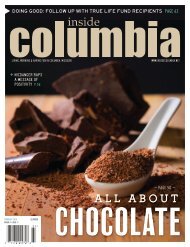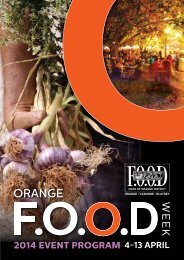Cortina Inverno
Eccoci arrivati al decimo numero di CORTINA.TOPic. Una bella strada, quella che abbiamo percorso assieme. Con un obiettivo interessante, quello di dar vita — cinque stagioni or sono — a una rivista dalla doppia vocazione: di approfondimento e promozione, capace di immortalare la Cortina che ci piace e di dar voce a chi la ama, guardando sempre al futuro, forti di un illustre passato.
Eccoci arrivati al decimo numero di CORTINA.TOPic.
Una bella strada, quella che abbiamo percorso assieme. Con
un obiettivo interessante, quello di dar vita — cinque stagioni
or sono — a una rivista dalla doppia vocazione: di approfondimento
e promozione, capace di immortalare la Cortina che
ci piace e di dar voce a chi la ama, guardando sempre al futuro, forti di un
illustre passato.
You also want an ePaper? Increase the reach of your titles
YUMPU automatically turns print PDFs into web optimized ePapers that Google loves.
In the<br />
beginning<br />
it was...<br />
A<br />
secret that had been guarded<br />
for 230 million years in the amber<br />
of the Tofane was discovered<br />
last August by an international<br />
research team in cooperation with<br />
the group of paleontologists from the University of<br />
Padova and the research team of the Institute of<br />
Geoscience and Georesources of the C.N.R. (National<br />
Council for Research).<br />
The exceptional finding occurred while analyzing<br />
70,000 fragments of amber containing samples<br />
of animal or vegetable material collected near<br />
<strong>Cortina</strong>; included were two mites and one mosquito<br />
— belonging to now extinct species — which<br />
remained trapped in resin drops produced by the<br />
conifers of the Dolomites.<br />
«In 2006, the research team had already published<br />
the results on the study of bacteria and<br />
protozoa contained in the Dolomite amber. These<br />
samples proved to be incredibly similar to microorganisms<br />
which exist today — declared Eugenio<br />
Ragazzi from the University of Padova, one of the<br />
authors of the study published on the American<br />
journal Proceedings of the National Academy of<br />
Science. Before this discovery, the oldest known<br />
samples of animal organisms included in amber<br />
dated back to about 130 million years ago». The<br />
new findings show a geographic shift as well, because<br />
the oldest evidence so far had been found in<br />
an area between Lebanon and Jordan.<br />
«Amber is an extremely precious instrument<br />
for paleontologists because it preserves samples<br />
with microscopic accuracy, enabling us to formulate<br />
very accurate evaluations of evolutionary<br />
changes over a span of millions of years»: declared<br />
David Grimaldi, one of the world’s best experts on<br />
arthropods preserved in amber, and curator of the<br />
invertebrate zoology section for the American Museum<br />
of Natural History in New York.<br />
Geo & Geo<br />
Thanks to the exceptional state of preservation,<br />
two of the three arthropods were identified<br />
as new species and named Ampezzoa triassica<br />
and Triasacarus fedelei, to honour <strong>Cortina</strong> born<br />
Paolo Fedele who had indicated the layer in 1997.<br />
The two arthropods are in all respects similar to<br />
eriophyidae, phytophagus insects: they lived in<br />
a period before flowering plants existed, which is<br />
why they fed on coniferous leaves belonging to the<br />
extinct family of Cheirolepidiaceae, the same tree<br />
which produced the resin where they were found.<br />
Researchers have observed that «it is incredible to<br />
think that, notwithstanding all the evolutionary<br />
processes, 100 million years before the appearance<br />
of flower plants or dinosaurs, eriophyidae were almost<br />
similar to today’s species.»<br />
Scienza e natura spiegate<br />
anche ai più piccoli. da goccia<br />
a gioiello: il meraviglioso<br />
viaggio dell’ambra è il<br />
laboratorio organizzato per<br />
i per bambini dai 5 ai 12 anni<br />
dal Museo incanta, rassegna di<br />
animazione museale.<br />
Info: + 39 346 6677369,<br />
didattica.musei@regole.it<br />
61

















